Why is the Hubble Telescope so powerful but still unable to take clear pictures of Pluto?
- Tram Ho
Since the Hubble Space Telescope was launched more than 30 years ago, it has captured many beautiful scenes of the deep universe for humanity, galaxies tens of millions of light years and billions of light years away. The light is also clearly visible in Hubble’s lens.

The Hubble Space Telescope was launched into Earth’s orbit by the space shuttle Discovery more than 30 years ago. Since then, Hubble has captured breathtaking images that are not only incredibly beautiful, but also provide invaluable scientific insight, showing that the rate of expansion of the universe is actually accelerating due to a mysterious force. something called dark energy.
However, it is strange that the Hubble Telescope can image galaxies hundreds of millions of light-years away, but why can’t it clearly capture exoplanets tens of light-years away, or even even Pluto in the Solar System?
Many people may think that the reason behind this is very complex, will involve problems at the law level of the universe, but in fact, the answer is much simpler than you think. Hubble can take pictures of distant galaxies but cannot take pictures of Pluto because the angular diameters (apparent diameters) of the two are different.
You may not be familiar with the word angular diameter, but it is used in astronomy to describe the size of a target object. For example, the angular diameter of the Moon in our field of view is about 0.5 degrees.

This image is part of a project called ‘Hubble Legacy Field’, which builds high-resolution images by pointing the Hubble Space Telescope at a certain point, then stitching them together to form a plate. large image. These images will help scientists better understand space and time.
However, when the Moon is 380,000 km from Earth and has an angular diameter of 0.5 degrees, the Andromeda galaxy, 2.54 million light years from Earth, has an angular diameter of 3 degrees, six times that of Earth. their natural satellites. It’s very far away, but its diameter is up to 220,000 light-years, so it’s much easier for the Hubble Telescope to photograph it than it is to photograph the Moon. It can even use hundreds of exposures to eventually synthesize a billion-pixel image of the Andromeda galaxy.
Meanwhile, the angular diameter of Pluto at 4.8 billion kilometers away is only 0.11 arcseconds (1 degree equals 3600 arcseconds). Therefore, Pluto can be seen as too small in the field of view of Hubble.
Therefore, it was not until the New Horizons probe passed Pluto in 2015, that humans obtained high-definition images of Pluto.
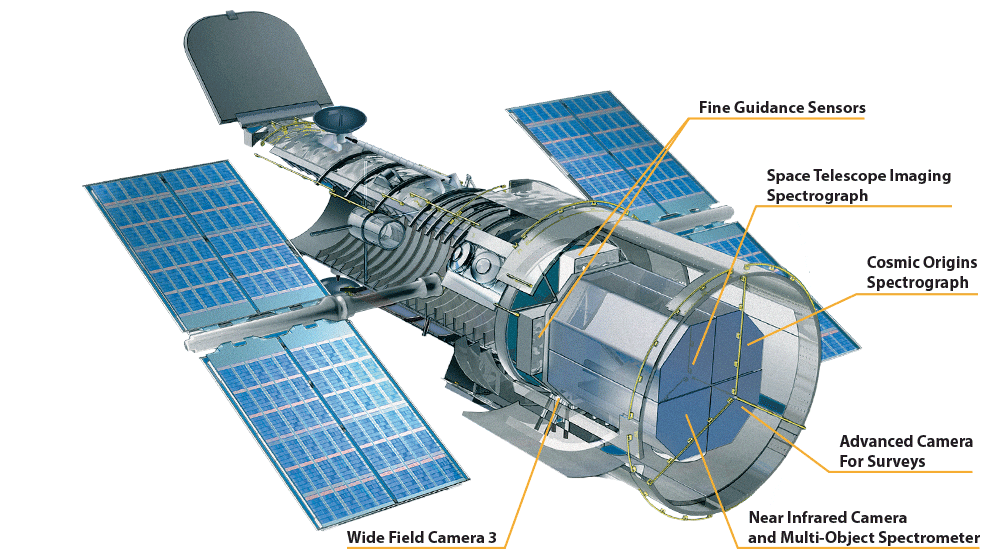
The Hubble Space Telescope was launched and operated in Earth’s orbit at an altitude of about 610 km, about 220 km higher than the orbital altitude of the International Space Station ISS. With a speed of about 7,500 m/s, Hubble can orbit the Earth once in 97 minutes and 15 times a day.
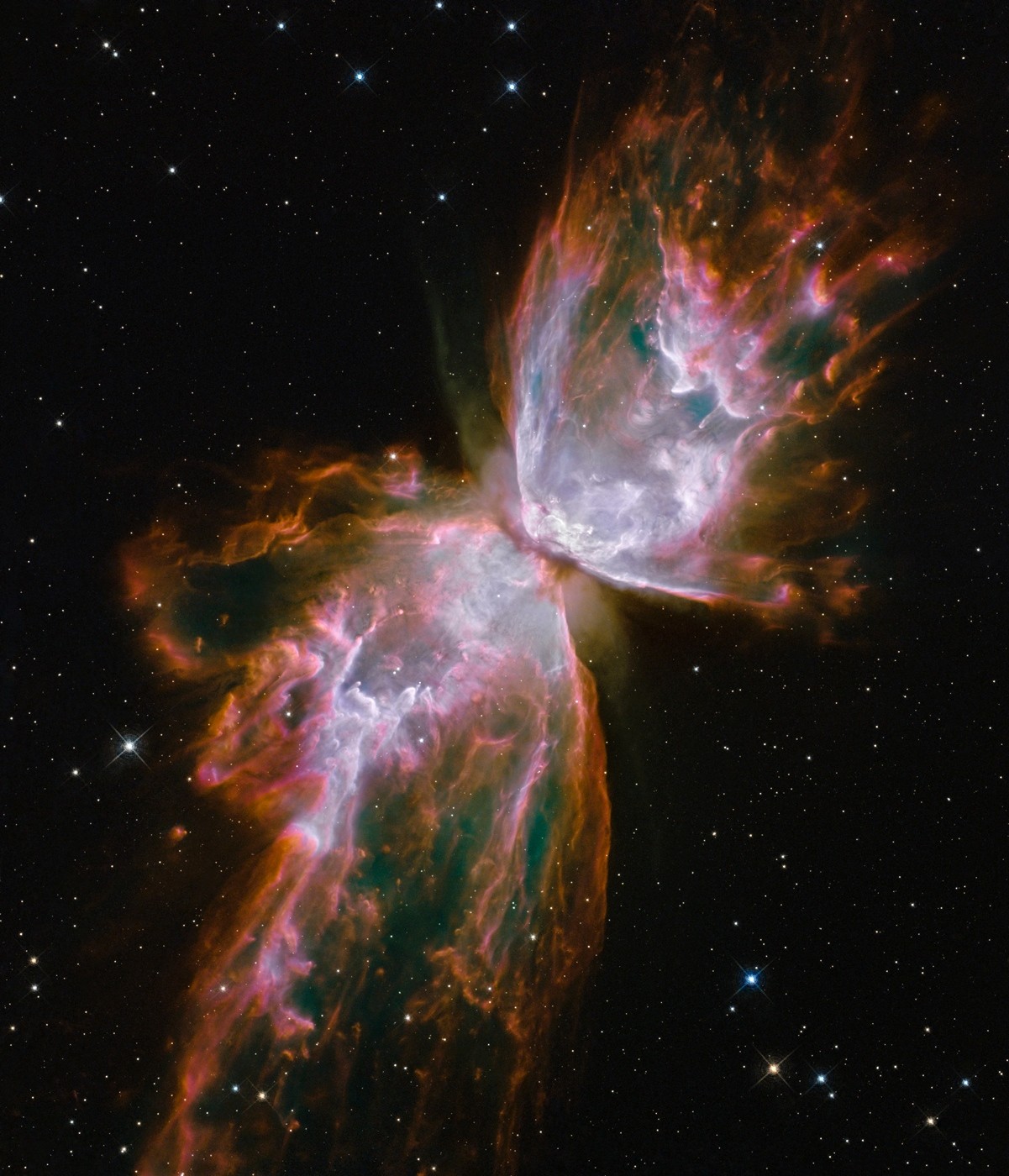
Also known as the “butterfly nebula” with its hourglass shape, the planetary nebula NGC 6302 formed from plumes of gas that were heated to a temperature of 20,000 degrees Celsius in the explosion of a star five times more massive. Sun. Clouds of dust and gas spread out at a speed that ripped through space – about 965,000km/h. These clouds of gas and dust have been floating in space for about 2,200 years and the wingspan of the “giant butterfly” is about 2 light years long. NGC 6302 is located in the Milky Way, about 3,800 light-years from the constellation Scorpio. The image was taken by Hubble on July 27, 2009.
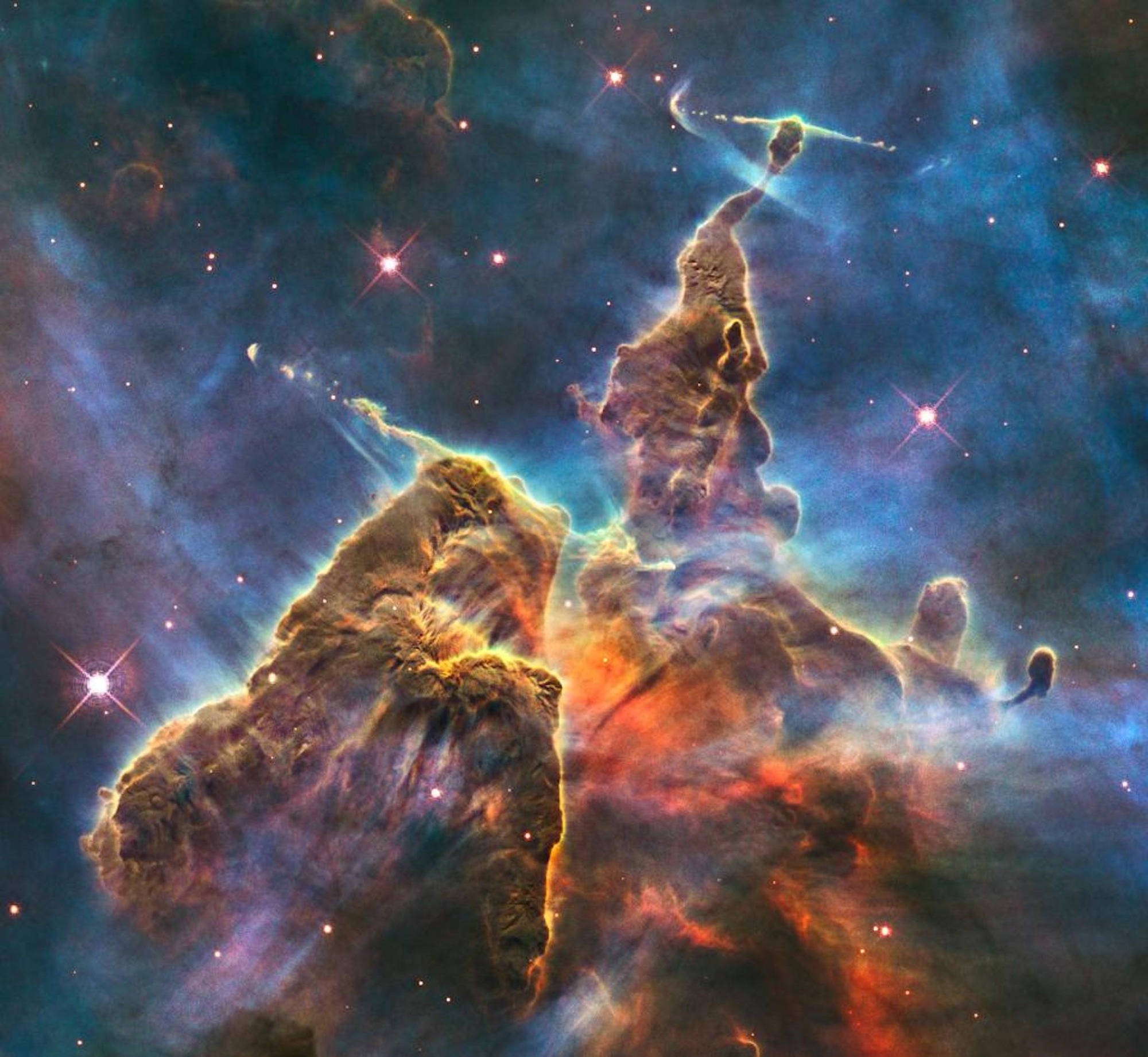
The photo above was taken in April 2010: This image captures the top of a variety of cosmic gas and dust clouds up to 3 light-years in height. This was chosen as an image to celebrate the 20th anniversary of Hubble’s launch into orbit around the Earth. The faint light of this cloud is dwarfed by the brighter stars around it, and from within, young stars are forming, emitting rays of light that penetrate outward. This cloud of gas and dust, known as the Carina Nebula, is located 7,500 light-years south of the constellation Carina.
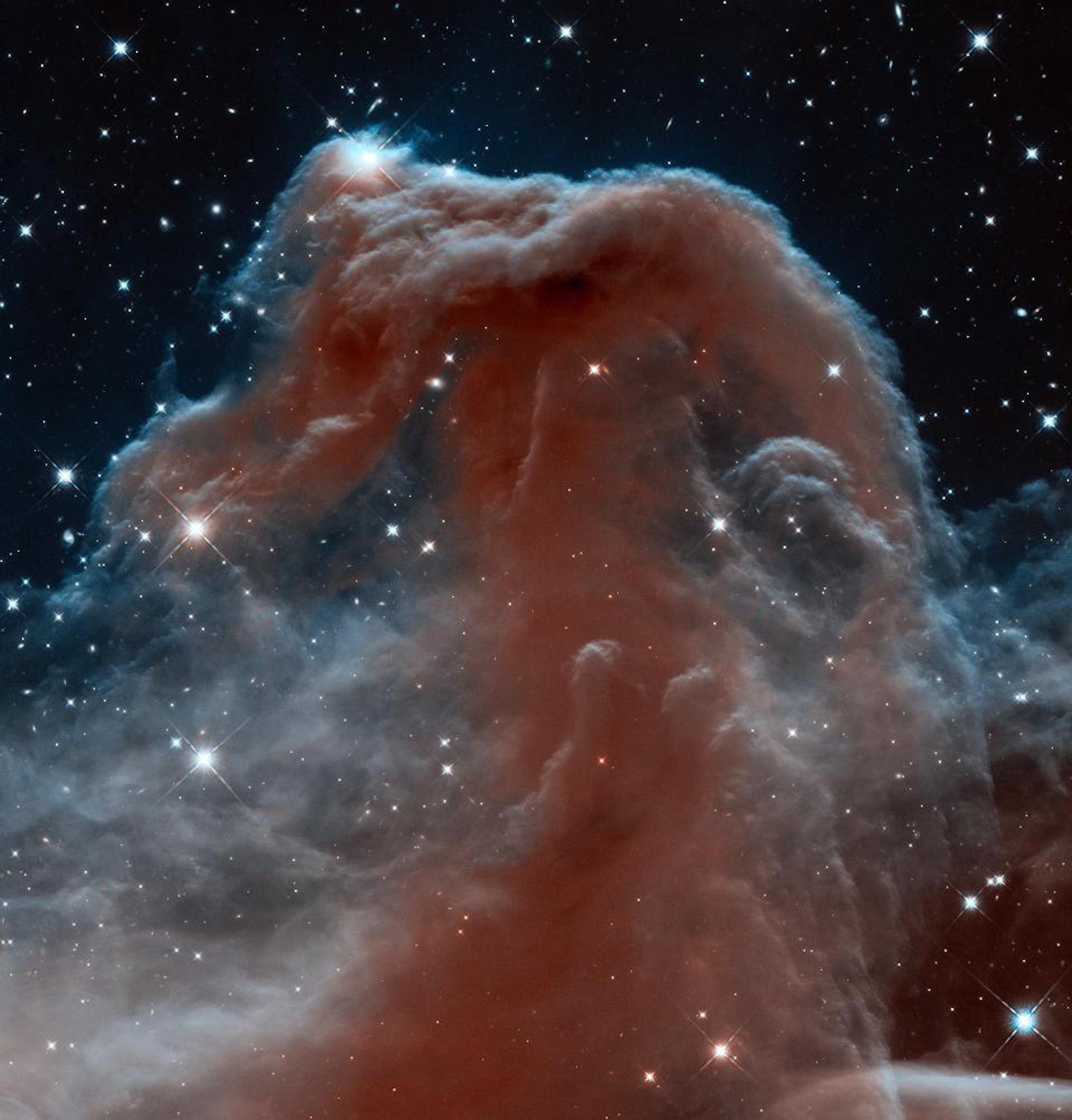
The Horsehead Nebula was captured by the Hubble telescope in April 2013. It is shaped like a seahorse and is also known as Barnard 33. The photo above was actually taken with infrared light, a type of light with wavelengths longer than those visible to the human eye. . Infrared light can penetrate the dense layer of cosmic dust, thereby making it possible for Hubble to pick up.
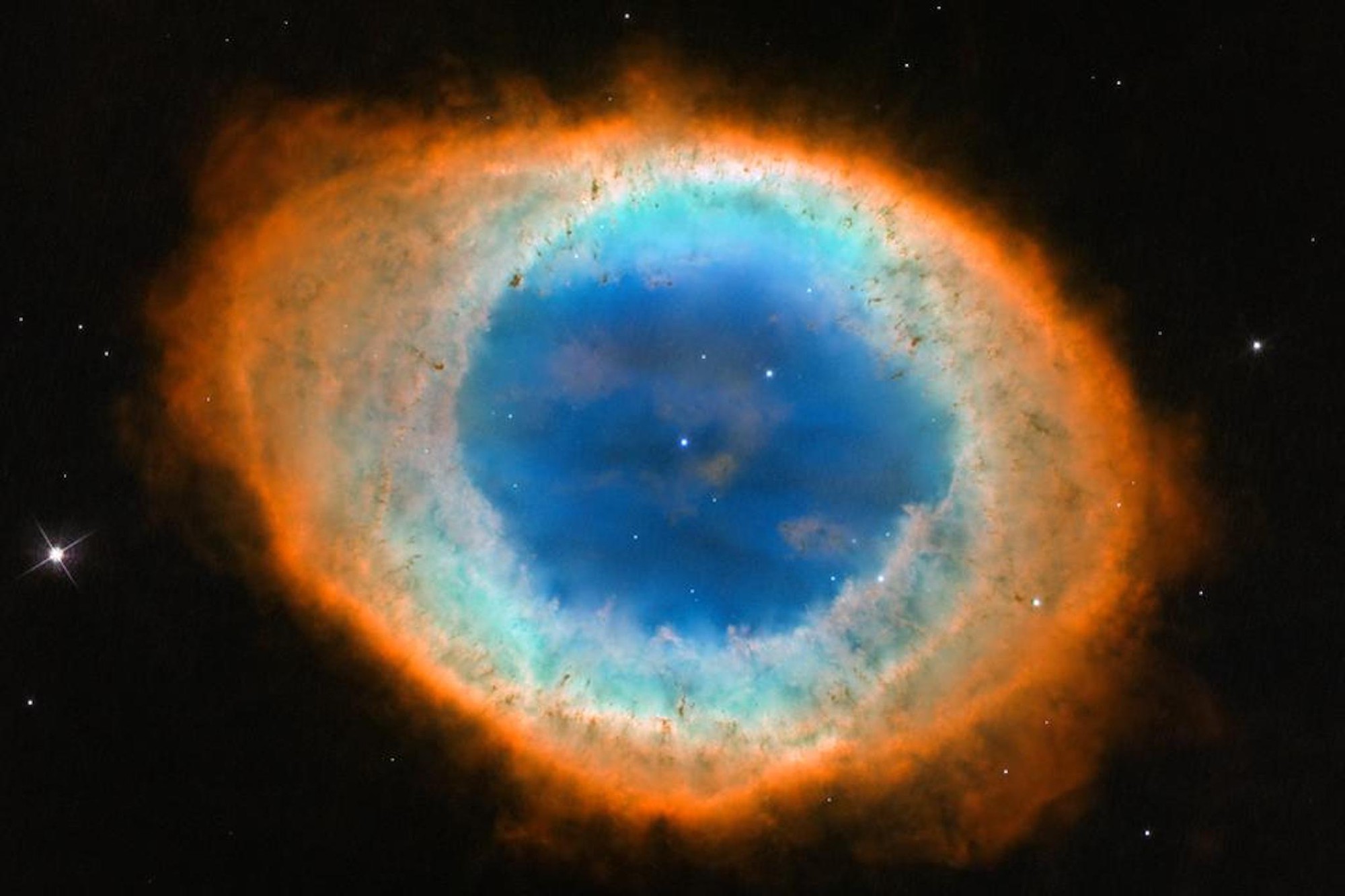
In May 2013, from a distance of 2,000 light-years from Earth, the Hubble telescope was able to capture an image of a ring-shaped nebula like its name – Ring Nebula. The white spots you can see in the picture are super hot white dwarfs. White dwarfs are one of the evolutionary steps in stellar evolution in the universe, for example the Sun will evolve into a similar white dwarf – in about 5 billion years. The Ring Nebula has a pretty ring-like appearance, consisting of a blue area in the middle and a red halo outside.
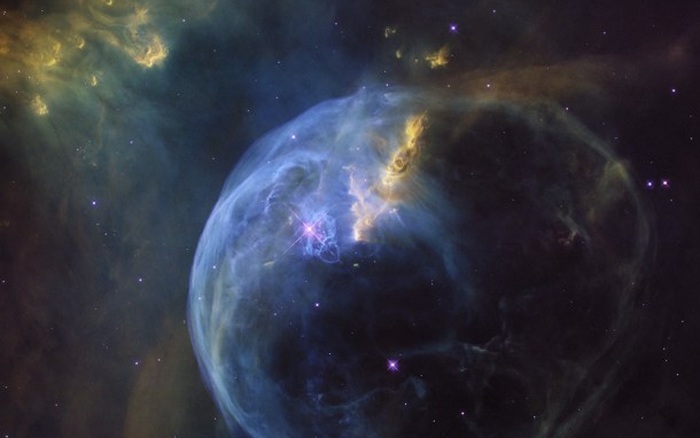
April 21, 2016 is the 26th birthday of the Hubble Space Telescope. To celebrate this important day, NASA has released stunning images of the Bubble Nebula that was captured by Hubble. Bubble Nebula is a massive and very hot star that produces gas and dust that is blown into space by strong winds.
Source : Genk
